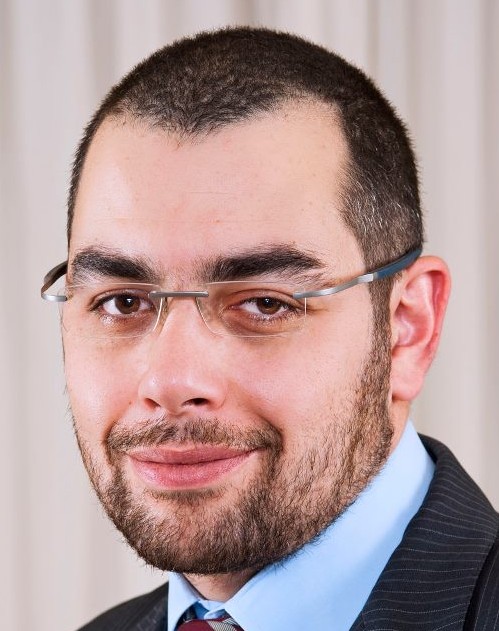By Daniel Nisman
In 2007, a visit to the West Bank city of Nablus required passage through one of the most notorious checkpoints in the area: Checkpoint Hawara. Named after the small village in which it cuts off from Nablus, Checkpoint Hawara was known throughout the IDF as magnet for pipe bombs, stabbing attacks and suicide bombers on their way to hit targets inside of Israel. To Palestinian residents of Nablus, the checkpoint was the cause of daily misery, crippling their freedom of movement as well as their economy. In 2011, Hawara, along with hundreds of other checkpoints have vanished, enabling Palestinians pass back and forth from Nablus with relative ease. The IDF decided to gradually ease security measures in spite of the fact that Israel and the Palestinians are still deadlocked in a bitter conflict which has no end in sight. The only difference between today and 2007, is that the Palestinians have ingeniously changed their tactics from terror attacks to seemingly non-violent demonstrations to which Israel is unable to counter.
While the images of young Palestinian children throwing stones at IDF tanks have captivated the world since the first Intifada, the past four years have seen a spike in dramatic and high profile displays of civil disobedience and non-violent protest. Many of these demonstrations were organized with the help of the Palestinian leadership, foreign governments, and powerful NGO’s and aid groups. Examples of such acts include the ‘Nakba’ and ‘Naksa’ day border marches, the Bil’in and Na’lin weekly security fence protests, and of course, the Gaza ‘Flotilla’ movement. Although each one of these incidents involved provocations with the Israeli military, they were all wildly successful in keeping the Palestinian plight in the world’s focus and portraying Israel as the violent aggressor.
While the Israeli government still cites the security threat as the primary reason to retain effective control over the west bank, Israeli society as a whole fails to comprehend the Palestinians’ adoption of non-violent tactics has now become the greatest strategic threat to Israel as a whole. The switch to non-violence is most prevalent among Mahmoud Abbas’s Fatah faction, who now controls the West Bank after Hamas staged a violent takeover of the Gaza Strip in 2007. The shift in strategy can be attributed to a number of factors: By the year 2007, security measures implemented by the IDF made it nearly impossible to execute a successful terror attack inside Israel. The completion of the security fence along with nightly counter terror raids prevented Palestinian militants from leaving their neighborhoods, let alone cross the green line to attack Israeli civilians. Perhaps even more importantly, the rise of Hamas in Gaza left Israel and the West with no other choice than to support the lesser of two evils, the Fatah-led Palestinian Authority. This support allowed the PA to rebuild its security forces, restore the economy of the West Bank by attracting massive foreign investment, and establish governing institutions which would eventually form a key component of its Statehood argument.
As the vote for Statehood in the United Nations looms, the Palestinian territories are still divided between Hamas-led Gaza and PA-controlled West Bank. In the West Bank, the economy is booming, hundreds of checkpoints have been removed, and former terror hubs like Nablus are now patrolled by Abbas’s Western-trained security forces. The situation in Gaza is quite the opposite, with Hamas jostling for power with dozens of extremist groups, and the economy crippled by years of fighting and the Israeli blockade.
While there is little doubt that Abbas’s statehood bid will pass in the General Assembly, there has been mounting speculation over whether or not a violent intifada will engulf the West Bank once again. Fortunately and unfortunately for Israel, the Palestinian authority will almost certainly employ the same dramatic displays of non-violence which have crippled Israel’s image for the past four years.
Mahmoud Abbas, Salaam Fayad, and countless pro-Palestinian NGO’s understand that violence has not only harmed the Palestinian image, but has also only damaged their efforts arguments for independence. Demonstrations like those which occurred on last year’s ‘Nakba’ day, with the supposed descendents of Palestinian refugees marching on Israel’s borders in a symbolic effort to return to their homes stirred emotions not felt by the international community since the British quarantined the ‘Exodus’. In addition, the Palestinian population in the West Bank largely understands that a renewed wave of terrorism will destroy their economy, bring the IDF back into Palestinian cities, and severely disrupt their quality of life. Lastly, a return to violence would prompt beneficiaries such as the US and EU to withhold their aid to the Palestinian authority, a key factor in maintaining order in the West Bank. A failure to pay wages to civil servants and policemen would only serve to bolster Hamas in the West Bank, something that Fatah, the West, and Israel will do anything to prevent.
While the Palestinian Authority is working furiously to rebrand itself, Hamas has shown little interest in abandoning their tactics. In addition, the groups’ refusal to reconcile with the Palestinian Authority has only served to delegitimize their statehood bid, preventing Mahmoud Abbas from taking the podium in New York as the legitimate representative of all the Palestinians. The PA’s success with non-violent protest in their efforts for statehood may cause one to wonder why Hamas does not abandon violence as well. The answer is simply because Hamas does not want a Palestinian state as is proposed by Mahmoud Abbas. A Palestinian state based on the 1967 borders is in contradiction to the Hamas Charter, which calls for the complete destruction of the Jewish state, and as such a two state-solution is unacceptable. For this reason, we can expect groups like Hamas and Islamic Jihad to increase their efforts to launch terror attacks from the west bank in an attempt destabilize the west bank and ruin the progress of its rivals in the PA.
The current Israeli government is only now starting to realize that its campaign to delegitimize the Palestinian statehood bid is futile. No amount of Youtube videos or high-profile speaking events can counter the desperation of flag-brandishing civilians marching towards rifle-wielding soldiers in what they proclaim to be a march for freedom and self determination. Even though the IDF is working on perfecting its non-violent riot dispersal methods ahead of Sept. 21, they have no weapons which can turn off the cameras and shut out the media. If history is any indicator, journalists from around the world will likely be out in force in order to catch the IDF in the act, should another ‘Marmara’ or ‘Nakba’ day-style provocation result in dead protesters.
The power of non-violent protest and civil disobedience is undeniable, and the more and more the Palestinians adopt these tactics, the more they will leave Israel no choice but to end its effective control over the West Bank or risk total isolation. The statehood vote itself will likely draw the sympathy of even the most nationalistic Israelis, as the one-by-one ‘for-or-against’ process will evoke memories of the birth of their own nation. The sooner the Israeli leadership understands that it cannot counter the Palestinians’ new strategy of raw emotion, the sooner it will cut its losses and withdraw from the West Bank.
Daniel Nisman is an Argov Fellow for Leadership and Diplomacy at the IDC Herzliya. He is an IDF reservist and co-founder of the online dialogue project; www.friendasoldier.com


